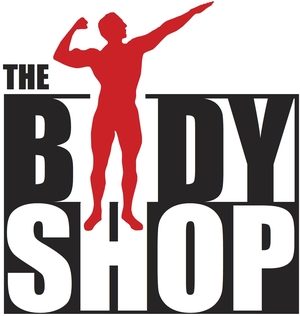Deadlifts find their way into a lot of our clients programs because they can help fix/strengthen many areas of the body. They are arguably one of the single most effective movements you can do; benefiting people from all age ranges, skill levels and with varied goals. If you don’t have any limiting injuries, the deadlift is an exercise you should probably incorporate into your routine. Here are a few reasons we love them:
Teaches primal movement mechanics. Mastering a deadlift teaches people the proper mechanics and movement patterns that later translate to everyday life. I guess you can call them “functional”. When it comes to lifting heavy objects like children, boxes or moving furniture etc., a lot of deconditioned people wind up getting hurt in scenarios like these because they are not only weak but unaware of proper lifting mechanics. However, learning how to properly and efficiently lift from the floor will help engage the right muscles needed to get the job done.
Hits the posterior chain. The “posterior chain” refers to the back side of the body (back, glutes, hamstrings, calves). Most people have an imbalance when it comes to strength and activation on the front side (quads, chest) verses the backside of the body-- the front tends to be stronger/overactive. This usually occurs for two main reasons. First, the untrained population usually performs activities that are front side dominant, including sitting for long periods of time which weakens the back as well. The second reason which we see in weight rooms everywhere is the “mirror muscle workout plan”. This plan refers to people who only train the muscles the can see when looking in the mirror (front side of the body). When deadlifting is done regularly, it helps eliminate this imbalance and keeps that posterior chain strong. A strong posterior chain has huge implications for power production and injury prevention for athletes as well.
Improves posture. While doing a deadlift your body is creating a situation where your strengthening your spinal erectors, or the muscles that run down each side of your spine. You are posteriorly tilting your pelvis and finishing with a strong hip extension. While this sounds like a lot of scientific jargon, what’s important to know is that when you build that rear side strength, your muscles are able to better support your skeletal system and you’re likely standing taller.
Improves grip strength. This one doesn’t need a whole lot of explanation except it's hard to be strong if your grip is weak. That being said, what better way to strengthen your grip then to hold heavy weights in your hands? For more on the importance of grip strength, click here.
Deadlifting Tips/ Techniques
While deadlifting is the king of exercises (right next to squats) it can get a bad rap from people who are not familiar with how to properly perform the movement. Because it is a compound movement, when done poorly it can aggravate the lower back. Here are a few things to keep in mind if you are a new or intermediate lifter who wants to take up or improve your deadlifting:
Start with a kettlebell variation. Kettlebells can allow you to start with less weight (barbell is a minimum of 45lbs) and really hammer home technique. They are also a little bit more forgiving than having a barbell at your shins and can make it easier to keep a flatter, more neutral, spine.
Perfect your hip hinge first. The “hip hinge” is the most important component of executing a quality deadlift. Learn that hips go backward before they go down.
Avoid your weight shifting forward and keep your weight back, driving through your heels.
Keep the weight close to your body. This is likely to help keep your weight back. If the weight rolls forward away from your, your body weight is also likely to shift forward which is not what you want.
Keep a flat back by keeping your lats and upper back tight.
Types of Deadlifts
There are numerous different types of deadlifts, each different variation comes with it’s own benefits. Unless you are specifically competing in a powerlifting event where you have to compete using a barbell, do not feel like barbell deadlifts need to be the gold standard option.
What’s most important is getting stronger, while minimizing any unnecessary, harmful stress to the lumbar spine (lower back) and for some people this means avoiding the barbell and focusing on kettlebell deadlifts or trap bar deadlifts.
While all variations work the same muscle groups, the difference comes down the how the weight is distributed and the angle that the hip and knee joints are able to move. During a barbell deadlift, having the barbell at your shins, limits the amount of flexion that occurs at the knee, compared to other variations, which make it a little bit more technique intensive and slightly more stressful on the low back.
For a trap bar deadlift, grips are on the side of the lifter who is standing in the hexagon shaped bar. For a kettlebell deadlift, the weight is either on the side of the lifter or it’s in between their legs. These options allow for a little bit more quad loading, knees can bend at more of an angle, all of which can cause a little less activation of the lumbar spine.
Regardless of which variation is best for you, be progressive each week by either adding weight or repetitions to continue to get strength and overall health benefits of this lift. An extremely sore or cranky low back while deadlifting maybe an indication that your form is not good or the weight is too heavy to maintain good form.
For more information or coaching on your deadlift, contact us!
References
https://www.ncbi.nlm.nih.gov/pubmed/21659894

